Explain irreversible process with one example.
Important Questions on Thermodynamics
One mole of an ideal diatomic gas undergoes a transition from to along a path as shown in the figure,
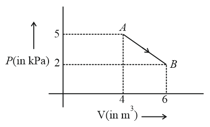
The change in internal energy of the gas during the transition is:
Thermodynamic process is shown below on a diagram for one mole of an ideal gas. If , then the ratio of temperature is :
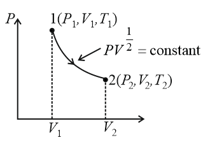
In the given diagram, a monoatomic gas is first compressed adiabatically from state state . Then it expands isothermally from state to state . [Given : ].
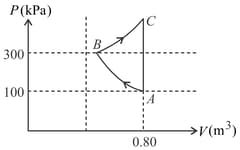
Which of the following statement(s) is(are) correct?
In the diagram below the dashed curved line is an adiabatic
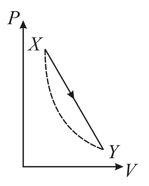
For a process that is described by a straight line joining two points and on the adiabatic (solid line in the diagram), heat is: (Hint: Consider the variations in temperature from and along the straight line)
The diagram for an ideal gas in a piston cylinder assembly undergoing a thermodynamic process is shown in the figure. The process is
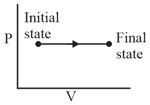
The figure shows the graph of versus for of hydrogen gas at two different temperatures, where and represents pressure, volume and temperature respectively.Then, the value of where the curve meet on the vertical axis, is
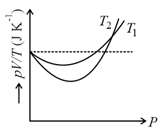
A sample of an ideal gas undergoes an isothermal process as shown by the curve in the diagram. If and represent the amount of heat absorbed the change in internal energy and the work done respectively, then which of the following statement is correct?
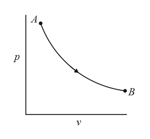

It rejects of heat during and absorbs of heat during . During , there is no transfer of heat and of work is done by the gas. What should be the area of the closed curve
The given diagram shows four processes i.e., isochoric, isobaric, isothermal and adiabatic. The correct assignment of the processes, in the same order is given by:
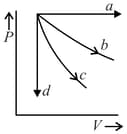
Thermodynamic processes are indicated in the following diagram.
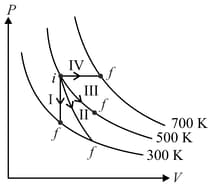
Match the following
| Column – 1 | Column - 2 |
| P. Process I | a. Adiabatic |
| Q. Process II | b. Isobaric |
| R. Process III | c. Isochoric |
| S. Process IV | d. Isothermal |

